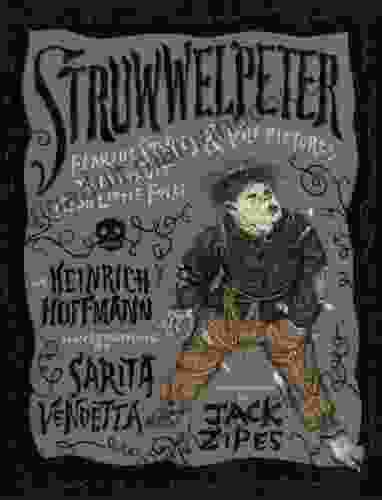Paint It Blackmail: The Sinister Saga of John Kite and the Threat He Posed to the Rolling Stones

In the annals of rock and roll history, there are few tales as bizarre and unsettling as the story of John Kite, the infamous "Paint It Blackmail" perpetrator. Kite's audacious scheme to extort money from the Rolling Stones, using their iconic song as a threat, sent shockwaves through the music industry and left an indelible mark on the band's legacy. This comprehensive article delves into the intricate web of events surrounding John Kite's blackmail attempt, shedding light on the shadowy figure behind the sinister plot.
The Genesis of a Blackmail Plot
The year was 1966, and the Rolling Stones were at the height of their rock and roll reign. Their latest single, "Paint It Black," had become a global phenomenon, topping charts and captivating audiences worldwide. However, behind the scenes, a sinister plot was brewing that threatened to tarnish the band's reputation and put their very existence in jeopardy.
4.2 out of 5
| Language | : | English |
| File size | : | 2700 KB |
| Text-to-Speech | : | Enabled |
| Screen Reader | : | Supported |
| Enhanced typesetting | : | Enabled |
| Word Wise | : | Enabled |
| Print length | : | 305 pages |
| Lending | : | Enabled |
Enter John Kite, a shadowy figure with a penchant for criminal activities. Kite, a former soldier turned con man, had carved a niche for himself through extortion and blackmail. Identifying the Rolling Stones as his next target, Kite devised a cunning plan that would not only line his pockets but also potentially destroy the band's career.
The Extortion Letter and Its Chilling Contents
In September 1966, the Rolling Stones received a chilling letter from Kite. The letter, written in a rambling and threatening tone, accused the band of plagiarism and demanded a substantial sum of money in exchange for his silence. Kite claimed to have evidence proving that "Paint It Black" had been stolen from a song he had written years earlier.
The letter sent shockwaves through the Rolling Stones camp. The band had encountered their fair share of legal battles over songwriting credits before, but this was different. Kite's claims were audacious and potentially damaging. The song "Paint It Black" was one of their most popular and recognizable tracks, and losing the rights to it would be a catastrophic blow to their career.
The Rolling Stones' Response: A Calculated Gamble
Faced with the threat of public humiliation and potential legal consequences, the Rolling Stones had to make a momentous decision. They could either pay Kite's extortion demands and risk further emboldening the blackmailer or defy his threats and call his bluff.
After careful deliberation, the band chose the latter. They refused to give in to Kite's blackmail and instead reported the matter to the authorities. The decision was a gamble, but one that ultimately paid off.
John Kite's Arrest and Conviction
With the support of law enforcement, the Rolling Stones launched an investigation into John Kite's activities. The authorities quickly uncovered a trail of evidence linking Kite to several other extortion and blackmail schemes.
In 1967, Kite was arrested and charged with multiple counts of attempted extortion. The trial that followed was a media sensation, with the world watching as the Rolling Stones testified against their tormentor.
The evidence against Kite was overwhelming. Witnesses testified to his threatening behavior, and handwriting analysis confirmed that he had written the blackmail letter. In the end, Kite was convicted and sentenced to a significant prison term.
The Aftermath: A Strengthened Bond and a Shadow Cast
John Kite's blackmail attempt not only failed to yield any financial gain but also ended his life behind bars. The Rolling Stones, meanwhile, emerged from the ordeal stronger than ever. The band's refusal to give in to Kite's demands had not only saved them from financial ruin but had also forged an unbreakable bond between them.
However, the shadow of Kite's blackmail plot would linger over the band for years to come. The experience had taught them the harsh reality that even at the pinnacle of their success, they were not immune to the threats and dangers that lurked in the shadows.
The story of Paint It Blackmail is a tale of greed, desperation, and the triumph of justice. John Kite, a cunning blackmailer, attempted to extort money from the Rolling Stones, using their iconic song as a weapon. However, the band's steadfast refusal to succumb to his threats and the subsequent investigation and prosecution of Kite demonstrated their determination and resilience in the face of adversity.
The legacy of Paint It Blackmail serves as a reminder of the sometimes-sinister underbelly of the music industry, where fame and fortune can attract those who seek to exploit and destroy. It is also a testament to the enduring power of friendship and the importance of standing up against extortion and blackmail in all its forms.
4.2 out of 5
| Language | : | English |
| File size | : | 2700 KB |
| Text-to-Speech | : | Enabled |
| Screen Reader | : | Supported |
| Enhanced typesetting | : | Enabled |
| Word Wise | : | Enabled |
| Print length | : | 305 pages |
| Lending | : | Enabled |
Do you want to contribute by writing guest posts on this blog?
Please contact us and send us a resume of previous articles that you have written.
 Top Book
Top Book Novel
Novel Fiction
Fiction Nonfiction
Nonfiction Literature
Literature Paperback
Paperback Hardcover
Hardcover E-book
E-book Audiobook
Audiobook Bestseller
Bestseller Classic
Classic Mystery
Mystery Thriller
Thriller Romance
Romance Fantasy
Fantasy Science Fiction
Science Fiction Biography
Biography Memoir
Memoir Autobiography
Autobiography Poetry
Poetry Drama
Drama Historical Fiction
Historical Fiction Self-help
Self-help Young Adult
Young Adult Childrens Books
Childrens Books Graphic Novel
Graphic Novel Anthology
Anthology Series
Series Encyclopedia
Encyclopedia Reference
Reference Guidebook
Guidebook Textbook
Textbook Workbook
Workbook Journal
Journal Diary
Diary Manuscript
Manuscript Folio
Folio Pulp Fiction
Pulp Fiction Short Stories
Short Stories Fairy Tales
Fairy Tales Fables
Fables Mythology
Mythology Philosophy
Philosophy Religion
Religion Spirituality
Spirituality Essays
Essays Critique
Critique Commentary
Commentary Glossary
Glossary Bibliography
Bibliography Index
Index Table of Contents
Table of Contents Preface
Preface Introduction
Introduction Foreword
Foreword Afterword
Afterword Appendices
Appendices Annotations
Annotations Footnotes
Footnotes Epilogue
Epilogue Prologue
Prologue Tom Lydon
Tom Lydon Bob Blanton
Bob Blanton Vauhini Vara
Vauhini Vara Julian Stockwin
Julian Stockwin Helene S Herbert
Helene S Herbert Tammi Morrison
Tammi Morrison Andrew Levy
Andrew Levy Tracy Dennis Tiwary
Tracy Dennis Tiwary Stefano Cataldi
Stefano Cataldi Marc Plinke
Marc Plinke Jim Ledin
Jim Ledin Cheyenne Mccray
Cheyenne Mccray J C Ryle
J C Ryle Maurice Bloomfield
Maurice Bloomfield Nancy Revell
Nancy Revell Emma Tallon
Emma Tallon Ray Hitchins
Ray Hitchins Julian Bound
Julian Bound Walter Jon Williams
Walter Jon Williams Artemis Crow
Artemis Crow
Light bulbAdvertise smarter! Our strategic ad space ensures maximum exposure. Reserve your spot today!

 Jackson HayesAn Easy Guide To The Akashic Records: Unlocking The Secrets Of Your Past,...
Jackson HayesAn Easy Guide To The Akashic Records: Unlocking The Secrets Of Your Past,...
 Duane KellyRooting for You: The Inspirational Journey of Kenley Obas, Haitian-American...
Duane KellyRooting for You: The Inspirational Journey of Kenley Obas, Haitian-American... Melvin BlairFollow ·12.7k
Melvin BlairFollow ·12.7k Jackson BlairFollow ·17.6k
Jackson BlairFollow ·17.6k Patrick RothfussFollow ·5.9k
Patrick RothfussFollow ·5.9k Hassan CoxFollow ·6.8k
Hassan CoxFollow ·6.8k Colt SimmonsFollow ·3.3k
Colt SimmonsFollow ·3.3k Truman CapoteFollow ·7.8k
Truman CapoteFollow ·7.8k Raymond ChandlerFollow ·18.8k
Raymond ChandlerFollow ·18.8k Emanuel BellFollow ·15.5k
Emanuel BellFollow ·15.5k

 Yukio Mishima
Yukio MishimaUnveiling the Zimmermann Telegram: A Pivotal Document in...
The Zimmermann Telegram, a diplomatic...

 George Martin
George MartinFearful Stories and Vile Pictures to Instruct Good Little...
In the annals of children's literature, few...

 Grant Hayes
Grant HayesJessica the Viscount Wallflower: A Tale of Transformation...
In the opulent ballrooms and glittering...

 Jerome Blair
Jerome BlairThe Economics of the Global Defence Industry: A...
The global...

 Blake Kennedy
Blake KennedyBreath of Heron - A Window into the Poetic Depths of...
In the realm of...
4.2 out of 5
| Language | : | English |
| File size | : | 2700 KB |
| Text-to-Speech | : | Enabled |
| Screen Reader | : | Supported |
| Enhanced typesetting | : | Enabled |
| Word Wise | : | Enabled |
| Print length | : | 305 pages |
| Lending | : | Enabled |










